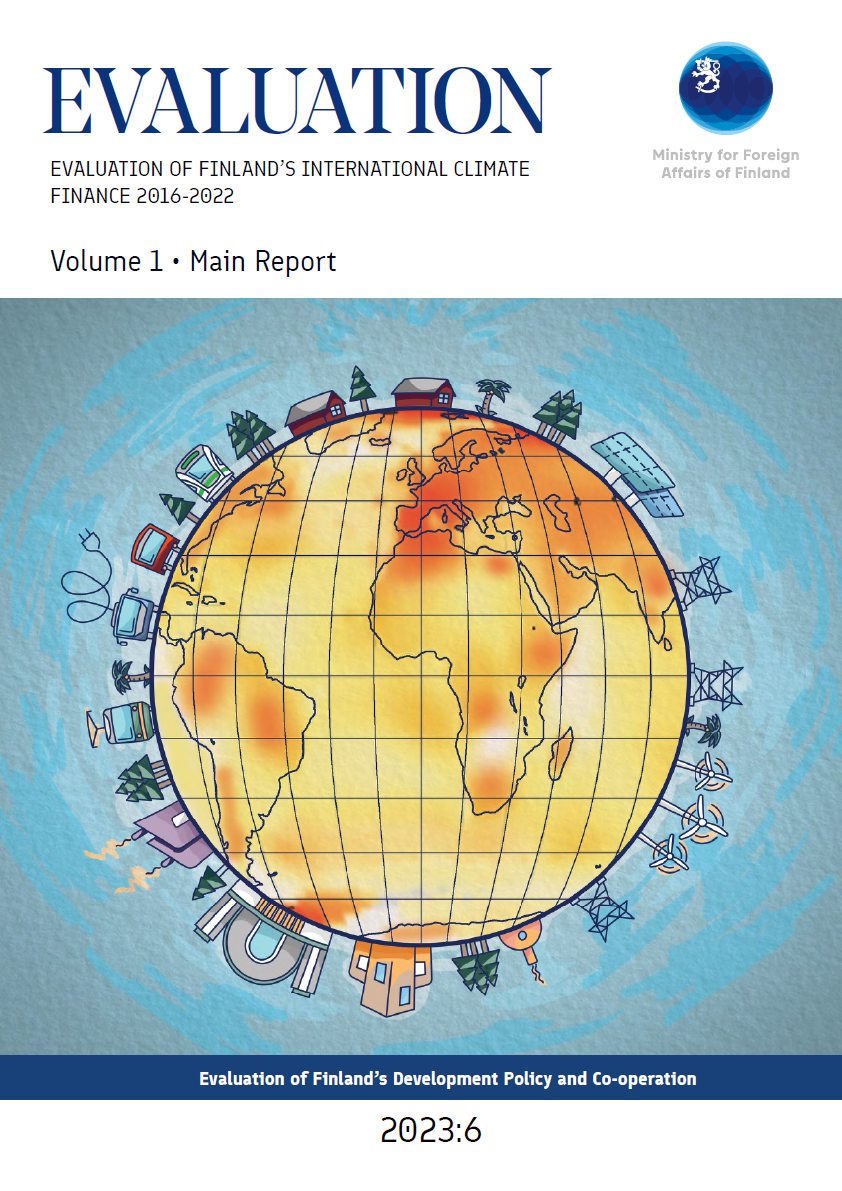Evaluation of Finland’s International Climate Finance 2016-2022
This evaluation assessed the relevance and coherence of the Ministry for Foreign Affairs of Finland’s (MFA) climate finance in relation to international objectives and actors, identified results that have been delivered over the period 2016-2022 and made suggestions on how the Action Plan for Finland’s Public International Climate Finance could be enhanced going forward.
Finland’s climate financing has not been evaluated before even though earlier assessments has been undertaken by the National Audit Office of Finland (NAOF) and Development Policy Committee (DPC). This evaluation builds upon both of them. 
Several different strategies and policies have influenced the shape and direction of Finland’s climate finance. Finland has lacked a clear and overarching strategy for its climate financing but has nevertheless achieved a broad range of climate outcomes. The MFA’s interventions are highly consistent with major global commitments under the Paris Agreement and UNFCCC processes, and strongly aligned with policy ambitions and priorities of development countries. Wider development priorities such as gender and human rights are also well reflected across the portfolio.
Institutional cooperation and participation by civil society have been successful but engaging private sector remains a challenge. The portfolio overall has been efficiently managed. Resourcing within MFA remains a constraint in terms of reporting and synthesizing results, mainstreaming approaches and multilateral influencing.
The evaluation recommends MFA to develop a clearer strategy for its overall climate finance, bringing together the various channels and instruments and ensure that the strategy is properly resourced. MFA should also strengthen its approach to climate mainstreaming and Paris Alignment and build a deeper understanding of Finnish value-added in the climate finance space. A greater integration and alignment between different instruments is also needed.
The evaluation was initiated in the autumn of 2022. The findings were based on a portfolio data review of more than 500 interventions and a more detailed assessment of 49 interventions representing more than 70% of the value of the portfolio. It further included a peer donor review and trend mapping, and interviews with more than 100 stakeholders. The evaluation also produced four case studies on
- adaptation and cross cutting objectives,
- development policy investments for the private sector,
- opportunities and benefits for Finnish stakeholder participation and
- the role of climate finance at the country level using Tanzania as an example.
The evaluation report consists of two volumes:
Volume 2, 2023:6, ”Case Studies” presents the case studies mentioned above. (PDF; 131 sivua; 6.6 MB)
Summary:
Finnish Climate Finance: Bridging the Gap between Commitment and Action (PDF; 4 sivua; 457 kB)
Material from the Presentation Event:
Presentation by the Evaluation Team (PDF)
